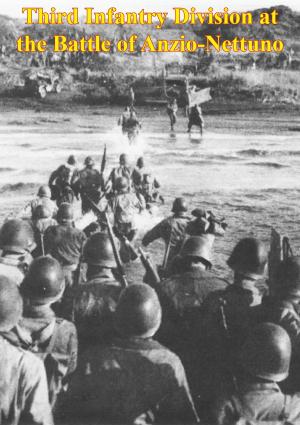Battle Of Aschaffenburg: An Example Of Late World War II Urban Combat In Europe
Nonfiction, History, Germany, European General, Military, United States| Author: | Major Quentin W. Schillare | ISBN: | 9781782897408 |
| Publisher: | Lucknow Books | Publication: | August 15, 2014 |
| Imprint: | Lucknow Books | Language: | English |
| Author: | Major Quentin W. Schillare |
| ISBN: | 9781782897408 |
| Publisher: | Lucknow Books |
| Publication: | August 15, 2014 |
| Imprint: | Lucknow Books |
| Language: | English |
The Battle of Aschaffenburg examines the fight for the Main River city of Aschaffenburg in the closing weeks of World War II in Europe. It investigates the reasons why it took mobile and well supported elements of the U.S. Army ten days to subdue a defending German military force that was very much militia in character. After setting the battle in the context of Nazi Germany and the Aschaffenburg region just prior to the fight, the study takes the reader through the battle day-by-day describing the struggle and establishing the reasons why it was so prolonged.
The study groups the reasons for the successful German defense into three categories: terrain, operational factors and behavioral determinants. It establishes that the terrain favored the defenders with the town located across the Main River from the attackers so that they were forced into frontal assaults. Granting favorable defensive terrain, it was not until a numerically superior attacking force enveloped the urban defenses, under the cover of massive fire support, that the Americans gained the upper hand. The study further demonstrates the Impact of the concept of the will to win on military operations, even in a hopeless cause.
The Battle of Aschaffenburg addresses Europe an urban combat in the context of World War II and concludes that the factors relevant to success then are still applicable. An attacker must carefully plan operations in urbanized terrain, follow doctrine and be physically and mentally prepared for a difficult fight.
The Battle of Aschaffenburg examines the fight for the Main River city of Aschaffenburg in the closing weeks of World War II in Europe. It investigates the reasons why it took mobile and well supported elements of the U.S. Army ten days to subdue a defending German military force that was very much militia in character. After setting the battle in the context of Nazi Germany and the Aschaffenburg region just prior to the fight, the study takes the reader through the battle day-by-day describing the struggle and establishing the reasons why it was so prolonged.
The study groups the reasons for the successful German defense into three categories: terrain, operational factors and behavioral determinants. It establishes that the terrain favored the defenders with the town located across the Main River from the attackers so that they were forced into frontal assaults. Granting favorable defensive terrain, it was not until a numerically superior attacking force enveloped the urban defenses, under the cover of massive fire support, that the Americans gained the upper hand. The study further demonstrates the Impact of the concept of the will to win on military operations, even in a hopeless cause.
The Battle of Aschaffenburg addresses Europe an urban combat in the context of World War II and concludes that the factors relevant to success then are still applicable. An attacker must carefully plan operations in urbanized terrain, follow doctrine and be physically and mentally prepared for a difficult fight.

![Cover of the book A War Nurse’s Diary; Sketches From A Belgian Field Hospital [Illustrated Edition] by Major Quentin W. Schillare](https://www.kuoky.com/images/2014/june/300x300/9781782891635-QpIG_300x.jpg)








![Cover of the book The Spider Web, The Romance Of A Flying-Boat War Flight [Illustrated Edition] by Major Quentin W. Schillare](https://www.kuoky.com/images/2013/january/300x300/9781782891024-6SVM_300x.jpg)




